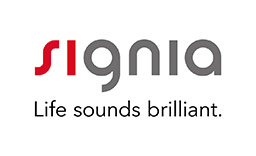Invisible Hearing Aids: Your Little Secret
Share this Post
Several years ago, Dr. Samuel Trychin, Ph.D. hosted a hearing workshop in the South, and one of the participants was a woman in her early seventies who appeared to be quite wealthy. He gave her a new hearing device, which allowed her to understand much more than she had in years. She kept raving about this “wonderful” device. At lunchtime, she left it in the room while they went out to a restaurant. When he asked her why she didn’t bring it along, her response was, “Oh, it doesn’t go with my outfit.”
Some individuals may not want to wear hearing devices for similar reasons. However, in the world of digital technology, hearing devices that completely hide in the ear canal are overcoming this barrier. These devices are so small and so precise, they are completely unnoticeable by others.
“As hearing devices get smaller and performance gets better, we are seeing a shift in the type of patient who comes in to our office. College students, CEOs, bankers, teachers and doctors. They all want a hearing device that is as small as it can be, but with as much technology as possible. They do not want to sacrifice quality for size. With the new “invisible” hearing aids, they don’t have to!”
Hearing devices are available in a wide variety of sizes, colors and prices. Many patients fear that smaller devices are more expensive, which is not true.
A typical “invisible” hearing aid is a custom-made device that sits very close to the eardrum and is removed daily via a small string that sits in the ear canal. It runs on batteries, which should be provided for the life of the device. Lifetime office visits should also be provided by the Audiologist from which you purchase the unit.
The average cost of an “invisible” hearing device is $2500 per ear –though all manufacturers offer a range of price levels; some higher, some lower. The more expensive the device, the more sophisticated the technology.
Audiologist Dr. Brittany Gates, of Decibels Audiology in Naples says, “Our Audiologists are able to test your hearing and help you to determine which brand of hearing device is best for you. There is no ‘one size fits all.’ Getting a hearing aid – ‘invisible’ or not – is a relationship. You have to do your research on your provider first – and you need to be open to the opportunity to hear well again. And yes, if you can do that without anyone seeing your hearing device, that’s just icing on the cake.”
Share this Post
Hearing more natural can be possible today!
- 30 day NO RISK trial period
- Special financing available
- Complimentary in-depth hearing exams
- Complimentary batteries for the life of the hearing device
- Complimentary office visits for the life of the hearing device








